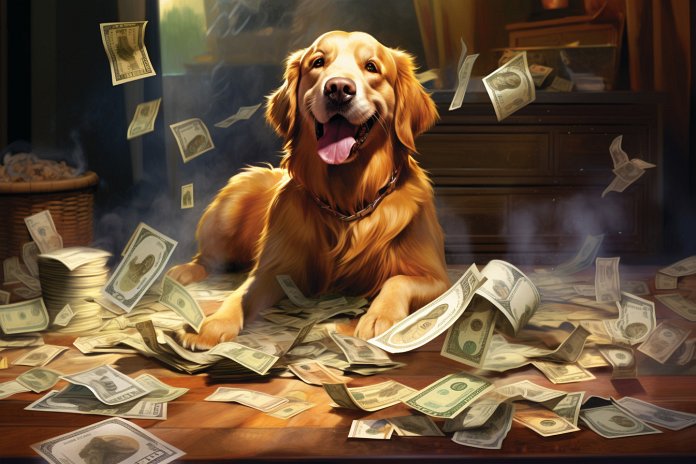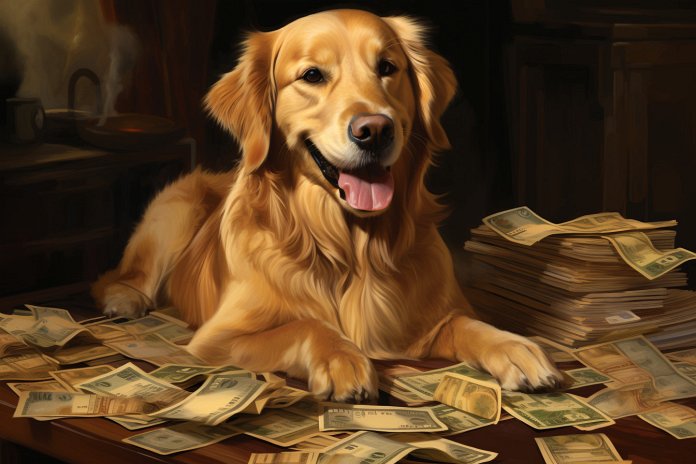
Dogs have proven their worth in various fields, from detecting illegal substances to tracking people. Now, there are dogs trained to sniff out cash and help catch criminals. But how do they know what money smells like, and can they differentiate between different currencies?
Signs a Dog Can Sniff Out Cash
Dogs with their incredible sense of smell have been trained to stop criminals from moving money across borders. Labradors, known for their friendly nature and strong prey drive, are the preferred breed. Dogs have a much better sense of smell than humans, with around 300 million scent glands compared to our 6 million. They can even pick up scents underground. These dogs can find hidden money in baggage, cargo, and on people’s bodies. They alert their handlers without causing damage. Some dogs even put their paw on top of the suspicious item. These cash-sniffing dogs can also follow and block suspects carrying large amounts of cash.
Body Language
When a dog detects a large amount of cash, they may exhibit signs such as digging, sniffing, freezing their body, raising their tail, or play-bowing. They may also point with their nose, follow and block a suspect, put their paw on top of the suspicious item, or alert their handler.
History of Detection Dogs
Detection dogs have a long history of serving their country. They were first used to detect bombs in World War II and later trained to find narcotics and explosives. Police dogs have been used since the 14th century, and bloodhounds were employed to track Jack the Ripper. Dogs have a keen sense of smell, which makes them perfect for tracking people, drugs, and currency. They can even detect changes in barometric pressure and warn of impending storms or earthquakes.
The Science of Detection Dogs
Studies have shown that dogs have an incredible sense of smell. They can detect a teaspoon of sugar in a million gallons of water. Their brain is 40 times more capable of picking up odors than ours. Dogs are trained to distinguish between illicit substances and safe ones. They can also categorize smells and recall scents weeks later. Researchers all over the world are fascinated by dogs’ sense of smell and their potential as the best sniffers on the planet.
Training a Dog to Smell Cash
Training a dog to sniff cash is challenging because cash can be handled by many different people. Dogs are trained to recognize the ink used on currency and differentiate between different currencies. Training is based on rewards, usually toys or rolled-up towels. Dogs are taught to show their handlers where the bills are hidden. In the early stages, dogs receive rewards for finding the cash, but as they progress, rewards are only given for accurate finds. Cash detection dogs may also be trained to detect narcotics. Handlers create a bond with the dogs and work closely with them throughout their training. After 6-8 years of service, detection dogs are often retired to their handlers.
Conclusion
Dogs’ impressive sense of smell has made them valuable assets in various fields. Cash-sniffing dogs play a crucial role in catching criminals involved in illegal activities. Their ability to detect money, along with their other incredible skills, has proven invaluable in protecting society.
“The nose knows: Dogs are the ultimate cash-sniffing machines, uncovering hidden stashes and putting a paw on the illegal loot.”

Tips & Things to Know
1️⃣ Dogs have an incredible sense of smell and can be trained to sniff out cash. They have around 300 million scent glands compared to our 6 million, making them highly effective at detecting odors.
2️⃣ Currency detection dogs, like Labradors, are trained to find hidden cash in baggage, cargo, and on people’s bodies. They can alert their handlers to the presence of large amounts of money by digging, sniffing, freezing, or even play-bowing.
3️⃣ Training a dog to sniff cash involves teaching them to recognize the specific ink used in different currencies. Reward-based training methods are used, with dogs being rewarded with toys or treats when they successfully find the hidden cash.
Frequently Asked Questions, Answered ✅
1. How do dogs know what money smells like?
– Dogs have an incredible sense of smell, with around 300 million scent glands compared to our 6 million. They are trained to detect the specific ink used in currency.
2. Can dogs sniff out different versions of currency?
– Yes, dogs can differentiate between various currencies and the ink used in each.
3. What are some signs that a dog has located a large amount of cash?
– Signs include digging, sniffing, body freezing, tail up, and play bowing. They may also point with their nose, follow and block a suspect, or put their paw on top of the suspicious item.
4. How are dogs trained to sniff out cash?
– Dogs are chosen for their enthusiastic scent drive and trained to find the cash using rewards, such as toys or rolled-up towels. They are taught to show their handler where the bills are buried or hidden.
5. How long do currency detection dogs typically work before retiring?
– Currency detection dogs usually start training at 12 to 18 months and work for 6-8 years before retiring to their handler.